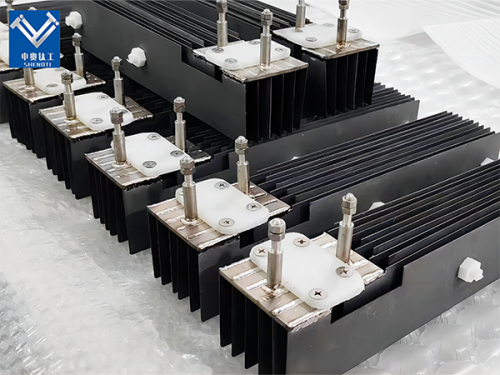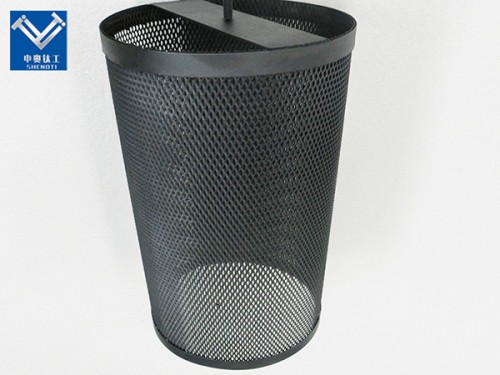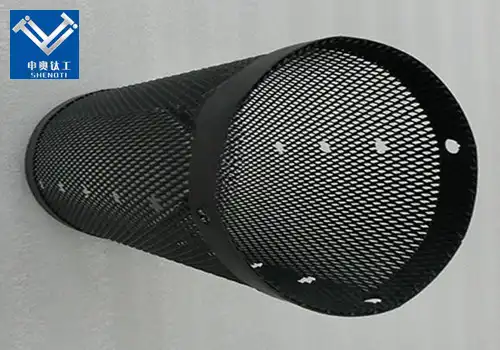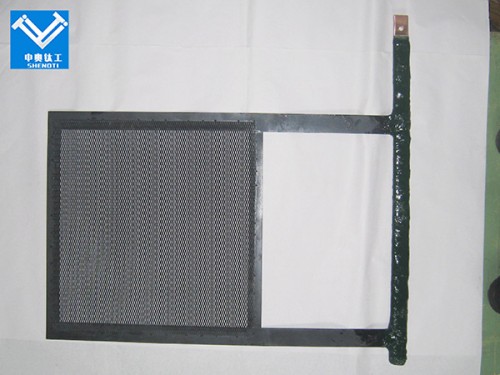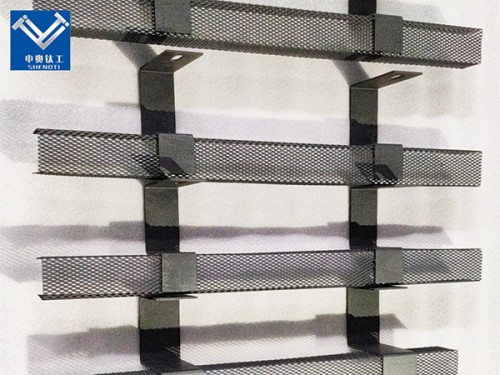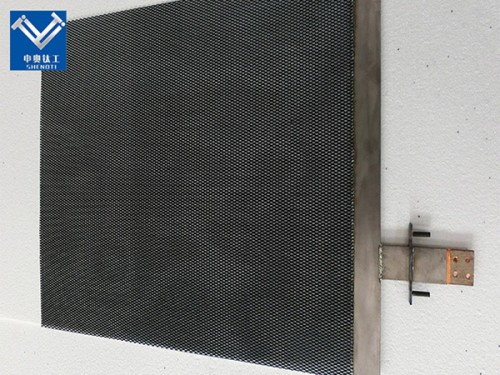
Applications of Titanium Anodes for Electrolytic Sterilization and Algae Removal
2025-08-27 15:54:54
Water quality management has become a global priority across industries ranging from municipal water treatment to aquaculture and swimming pool maintenance. One of the most advanced solutions available today is the titanium anode for electrolytic sterilization and algae removal. This specialized electrode technology ensures efficient disinfection, reliable algae control, and long service life, making it an essential component for modern electrochemical systems.
Unlike conventional disinfection methods that rely on chemical dosing, titanium anodes provide a clean, sustainable, and cost-effective approach. By applying an electric current, the titanium anode generates oxidizing species that eliminate bacteria, viruses, and algae without harmful chemical residues.
What is a Titanium Anode for Electrolytic Sterilization and Algae Removal?
A titanium anode for electrolytic sterilization and algae removal is a highly durable electrode manufactured from titanium substrate coated with mixed metal oxides (MMO) or platinum group metals. The coating is specifically designed to promote electrochemical reactions that release active chlorine, oxygen, and hydroxyl radicals. These species effectively kill microorganisms and degrade organic matter in water systems.
Key Characteristics Titanium Anode for Electrolytic Sterilization and Algae Removal
Corrosion Resistance: Titanium substrate with MMO coating ensures long-term stability in harsh environments.
High Current Efficiency: Optimized for maximum sterilization with minimal energy consumption.
Low Maintenance: Requires little to no chemical replenishment, reducing operating costs.
Eco-Friendly: Provides clean water treatment without introducing harmful by-products.
Titanium anode manufacturing process for electrolytic sterilization and algae removal
1: Titanium Substrate Preparation
High-purity titanium plates or meshes (typically Grade 1 or Grade 2) are selected as the base material. The substrate is mechanically polished, sandblasted, or chemically etched to ensure strong adhesion of the coating.
2: Coating Application
The substrate is coated with mixed metal oxides such as ruthenium oxide (RuO₂), iridium oxide (IrO₂), or tantalum oxide (Ta₂O₅). These coatings are applied using thermal decomposition, brushing, or spraying techniques.
3: Thermal Treatment
The coated titanium undergoes multiple cycles of heat treatment at controlled temperatures. This process ensures uniform crystallization and excellent coating adhesion.
4: Quality Testing
Each titanium anode is tested for coating thickness, electrochemical performance, current efficiency, and service life simulation to ensure reliability in real-world applications.
The result is a robust electrode with a service life that can exceed 5–10 years, even in demanding electrolytic sterilization systems.
How Does Titanium Anode Technology Work?
The titanium anode for electrolytic sterilization and algae removal operates on the principle of electrochemical oxidation. When current passes through the electrode in water, the following reactions occur:
Generation of Active Chlorine: Chloride ions (Cl⁻) present in water are oxidized to form free chlorine and hypochlorous acid, which destroy pathogens.
Formation of Hydroxyl Radicals: These highly reactive radicals degrade organic pollutants and inhibit algae growth.
Electrochemical Oxygen Release: Oxygen evolution further enhances sterilization and water clarity.
This multi-pathway disinfection mechanism ensures that bacteria, viruses, and algae are effectively neutralized, making the water safe and clear.
Applications of Titanium Anodes for Electrolytic Sterilization and Algae Removal
1. Swimming Pools and Spas
Traditional chlorine dosing often leads to unpleasant odors, skin irritation, and maintenance issues. Titanium anodes offer a safer, more efficient solution by generating chlorine electrochemically, ensuring clean water without excess chemical use.
2. Aquaculture and Fisheries
In fish farming, algae blooms and waterborne pathogens pose serious risks. Titanium anodes for electrolytic sterilization and algae removal ensure a healthy aquatic environment by preventing algal overgrowth and minimizing fish mortality.
3. Municipal Water Treatment
Municipalities use titanium anodes to disinfect drinking water and control algae in reservoirs. Their durability and low maintenance make them cost-effective compared to chemical treatments.
4. Cooling Towers and Industrial Water Systems
Algae and biofilm formation in cooling towers reduce heat exchange efficiency and increase operational costs. Titanium anodes eliminate these issues, ensuring optimal system performance.
5. Marine and Offshore Applications
Ships, desalination plants, and offshore platforms often struggle with seawater algae and microbial fouling. Titanium anodes provide a robust, long-term solution in high-salinity environments.
Technical Advantages of Titanium Anode for Electrolytic Sterilization and Algae Removal
1. High Durability
The coating composition and titanium base ensure excellent resistance against corrosion, even in seawater or chemically aggressive conditions.
2. Energy Efficiency
Titanium anodes require less electrical input for sterilization compared to conventional electrodes, reducing power costs.
3. Long Service Life
With proper coating technology, service life can reach 10 years or more, reducing replacement frequency.
4. Consistent Performance
Unlike chemical dosing systems that depend on manual intervention, titanium anodes provide stable sterilization under automated control.
5. Environmentally Friendly
Electrolytic sterilization avoids chemical handling and reduces harmful by-products, making it eco-friendly and sustainable.
Practical examples of titanium anodes used for electrolytic sterilization and algae removal
1: Aquaculture Farm in Southeast Asia
A shrimp farming facility experienced frequent algal blooms, leading to oxygen depletion and high mortality. After installing a titanium anode for electrolytic sterilization and algae removal, algae growth was reduced by 90%, resulting in improved yield and profitability.
2: Municipal Reservoir in Europe
A city reservoir faced recurring algae contamination during summer. Titanium anode systems were deployed to generate on-site oxidants, ensuring continuous water clarity and compliance with health regulations.
3: Cooling Tower in an Industrial Plant
An electronics manufacturer used titanium anodes in cooling towers to prevent biofilm accumulation. The system reduced maintenance downtime and saved 25% in operating costs compared to chemical treatment.
Technical Parameters of Titanium Anode for Electrolytic Sterilization and Algae Removal
Base Material: Titanium (Grade 1 or 2)
Coating Material: MMO (RuO₂, IrO₂, Ta₂O₅) or platinum
Shape: Plate, mesh, rod, or tubular
Current Density: 100–1000 A/m²
Operating Voltage: 3–12 V (depending on application)
Service Life: 5–15 years (application dependent)
These technical specifications can be customized according to client requirements, ensuring compatibility with different electrolytic sterilization systems.
The titanium anode for electrolytic sterilization and algae removal is more than just an electrode—it is a transformative technology for modern water treatment. From municipal water supply to aquaculture and industrial cooling towers, titanium anodes provide an efficient, durable, and eco-friendly solution to sterilization challenges.
By combining advanced coating technology, long service life, and proven effectiveness, titanium anodes are shaping the future of clean water management worldwide.
If your business seeks a reliable partner in titanium electrode solutions, our company provides high-quality products tailored to diverse applications. Contact us today to learn how our titanium anodes can optimize your water treatment systems.
Contact Us:
📧 Email: zh@baojiti.com.cn
Phone: 18729731603
Website: https://www.shenaocladplate.com
YOU MAY LIKE












